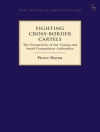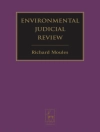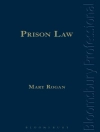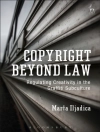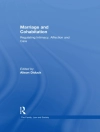Workplace safety includes a commitment to freedom from discrimination. But it is no easy feat. This book by a leading workplace legal expert is a step-by-step guide to ensure that employers and employees know how to steer clear of problems by creating and operating in a culture that avoids discriminatory practices. It examines the pitfalls of many workplace practices and the best features of successful firms and it points to several fundamental techniques and measures to achieve a workplace that doesn’t discriminate.
Tabela de Conteúdo
Introduction xiii
1 Human Rights Claims v. Wrongful
Dismissal Cases 1
1. Wrongful Dismissal 1
2. Human Rights Violation 3
2.1 Remedy by proof 3
2.2 Remedy without proof 4
2 Employment Relationship and Location
of the Incident 5
1. Are You Considered a Self-Employed Contractor
or an Employee? 5
2. Events in the Context of Employment but Happen
Outside the Workplace 8
3 Understanding the Process 11
1. The Parties to the Case 11
Contents
vi Avoiding Workplace Discrimination
2. The Process: Direct User Access or Human Rights
Commission’s Control over the Case 11
2.1 Power of the commissions 13
3. Class Actions 13
4. Vicarious Liability 14
4.1 Reprisal and vicarious liability 15
5. Organic Theory of Employer Liability 16
5.1 Employer deemed responsible for duty
to investigate (Ontario) 17
6. The Union As a Respondent 17
4 Grounds of Discrimination 20
1. Types of Human Rights Complaints 23
1.1 Disability cases 23
1.2 Sexual harassment cases 25
1.3 Family status complaints 31
2. Subtle Forms of Discrimination Complaints 37
3. Limitation Periods 39
5 The Difference between Human Rights
Claims and Employment Law Wrongful
Dismissal Cases 41
1. Proving the Case 42
2. The Absence of Direct Evidence 42
3. Motion to Dismiss before Full Hearing 43
6 General Damage Awards in Each
Province and Territory 48
1. Compensation for Injured Feelings 48
1.1 Damages presumed 49
1.2 Damages for the loss of the right to be free
of discrimination 49
2. The Employer’s Response to the Human Rights
Complaint 54
3. Damage Awards in Each Province and Territory 55
3.1 Ontario examples 56
3.2 Prince Edward Island example 57
3.3 British Columbia examples 57
3.4 Nova Scotia examples 59
3.5 New Brunswick examples 62
Contents vii
3.6 Newfoundland and Labrador examples 62
3.7 Manitoba examples 63
3.8 Saskatchewan example 63
3.9 Alberta examples 64
3.10 Nunavut example 66
3.11 Northwest Territories example 66
3.12 Yukon examples 66
3.13 Quebec example 67
3.14 Federal legislation example 68
4. Punitive Damages 68
5. Costs 69
7 Reinstatement Remedies 71
1. Special Damages: Lost Income 71
1.1 Principle of “make whole” 71
2. The Importance of Making a Claim for Reinstatement 75
2.1 Future lost income when reinstatement
is not allowed 76
2.2 Lost Opportunity 79
3. Provincial and Territorial Reinstatement Remedies 79
3.1 The Federal Act 80
3.2 Ontario 83
3.3 British Columbia 91
3.4 Alberta 92
3.5 Saskatchewan 95
3.6 Manitoba 96
3.7 New Brunswick 96
3.8 Nova Scotia 97
3.9 Newfoundland and Labrador 98
3.10 Prince Edward Island 98
3.11 Yukon 99
3.12 Northwest Territories 99
3.13 Nunavut 100
8 Duty to Mitigate Income Loss 101
1. Provide Medical Evidence 104
2. Emotional Trauma Considerations 105
3. Impact of a Finding of Failure to Mitigate 105
viii Avoiding Workplace Discrimination
4. Mitigation Expenses 108
5. Employment Insurance Benefits 108
9 Duty of the Employer to Investigate 110
1. Conduct Required to Trigger the Duty to Investigate 110
2. A Reasonable Investigation 111
2.1 Wall test 112
2.2 Immediate investigation may reduce
victim’s harm 113
3. Damage Awards for Failure to Investigate 116
10 Reprisals 118
1. Reprisal Claims for Each Province and Territory 118
1.1 Ontario 118
1.2 British Columbia 119
1.3 Alberta 120
1.4 Saskatchewan 120
1.5 Manitoba 120
1.6 Quebec 120
1.7 Nova Scotia 120
1.8 New Brunswick 120
1.9 Newfoundland and Labrador 121
1.10 Prince Edward Island 121
1.11 Yukon 121
1.12 Northwest Territories 121
1.13 Nunavut 121
1.14 Federal statute 121
11 Preventive Action for Employers 122
1. An Effective Investigation 123
2. Canada Labour Code’s Policy on Sexual Harassment 124
12 Tips for the Employers:
Defending the Case 126
1. Lost Income Awards 127
2. Reinstatement 128
3. Settlement Offers 129
4. Motion to Dismiss 129
Contents ix
13 Workers’ Compensation Defence 130
1. Charter Challenges to Workers’ Compensation
Legislation 131
2. Workers’ Compensation Statutes Can Affect
Human Rights Claims 133
3. Charter of Rights and Freedoms 135
14 Tax Considerations 137
1. Some Claims Are Taxable 140
Resources 141
Sobre o autor
David Harris is one of Canada’s authorities on workplace law, having practiced in the field of rights and responsibilities of employers and employees for decades. He is a senior lawyer practicing in Toronto. A renowned lawyer in the area of wrongful dismissal and employment law. As well as wrongful dismissal, David’s practice also includes human rights, workers’ compensation, post-employment competition, restraint of trade, fiduciary obligations, labor law, sexual harassment, employment contracts and various related areas of employment law litigation.


